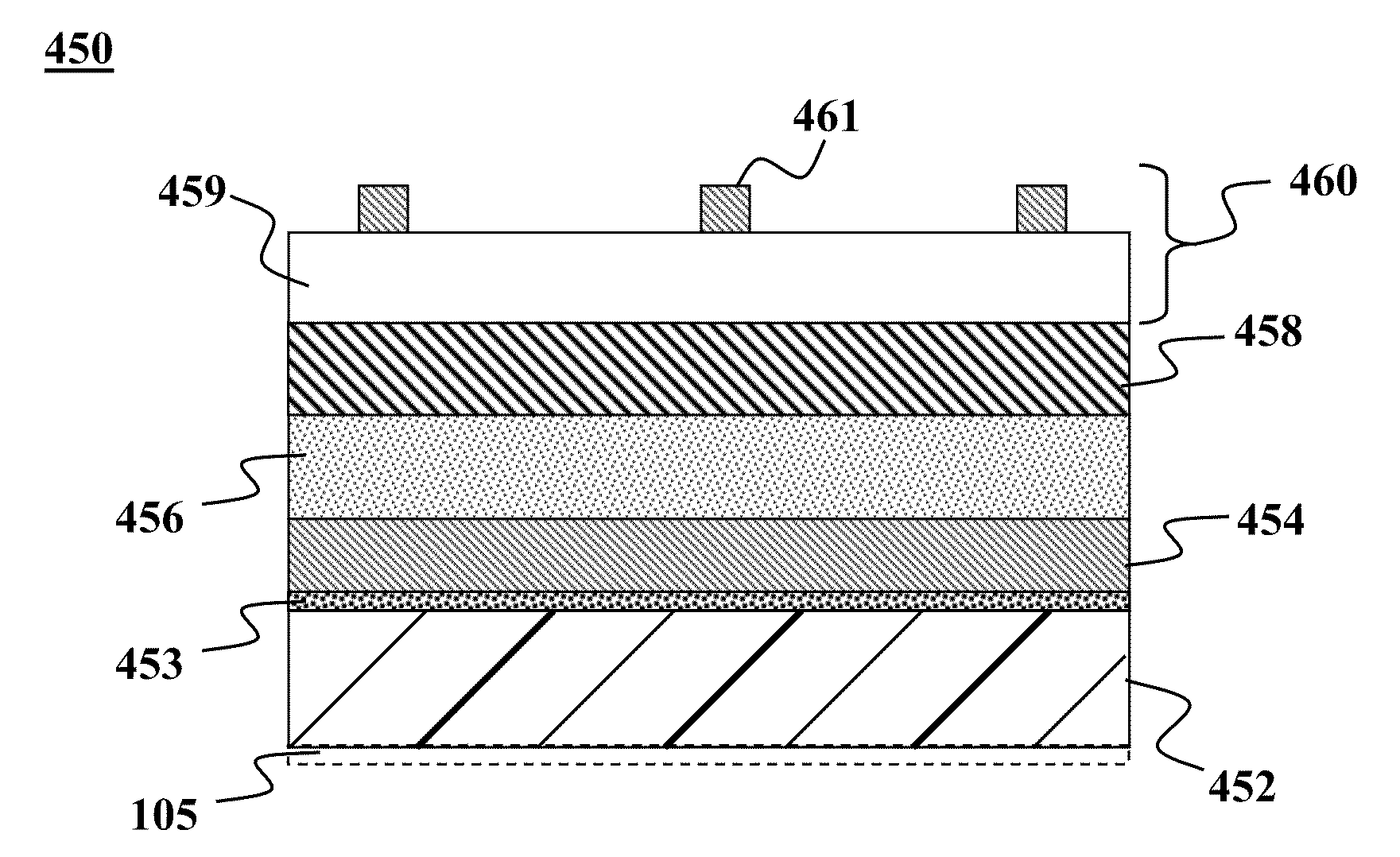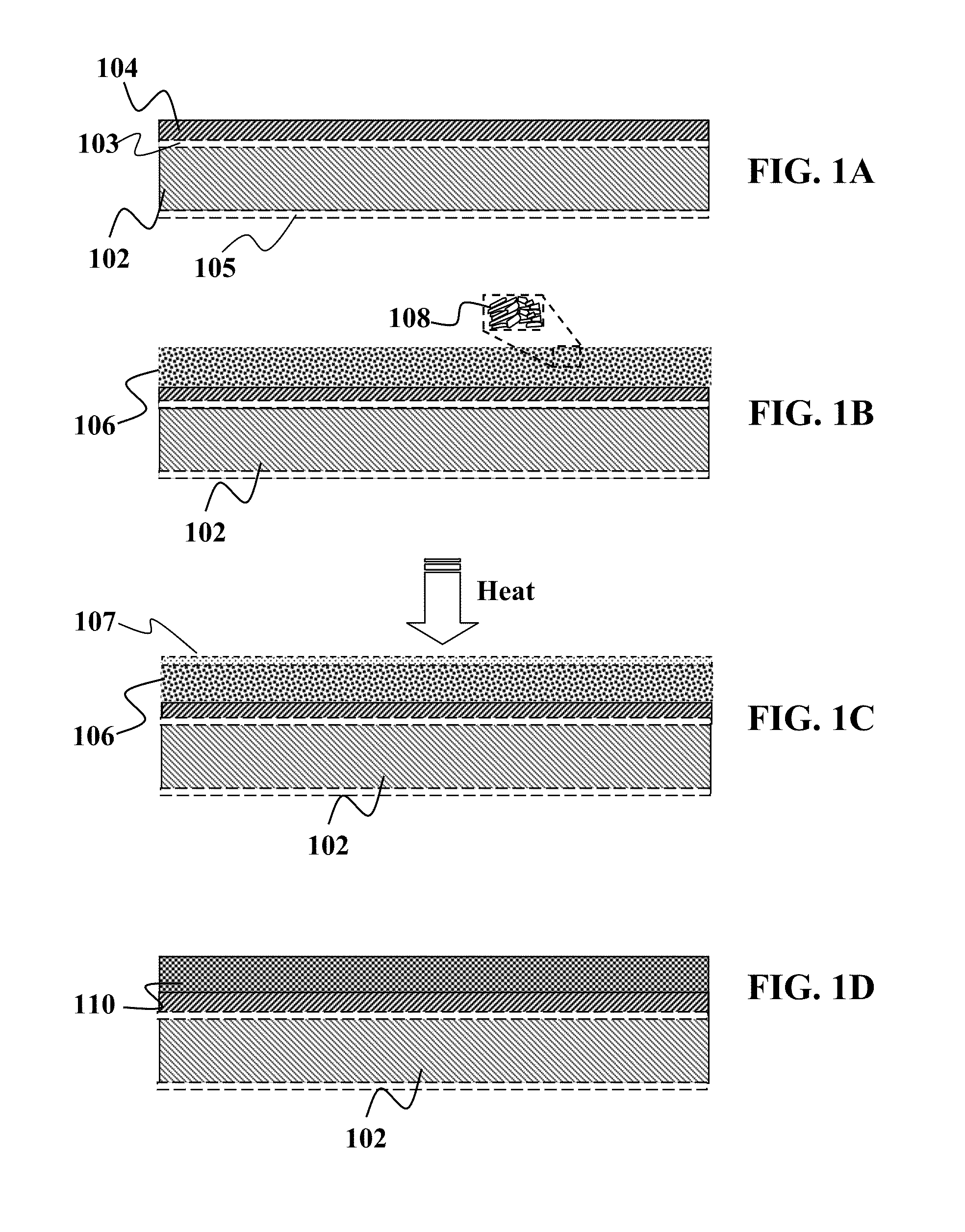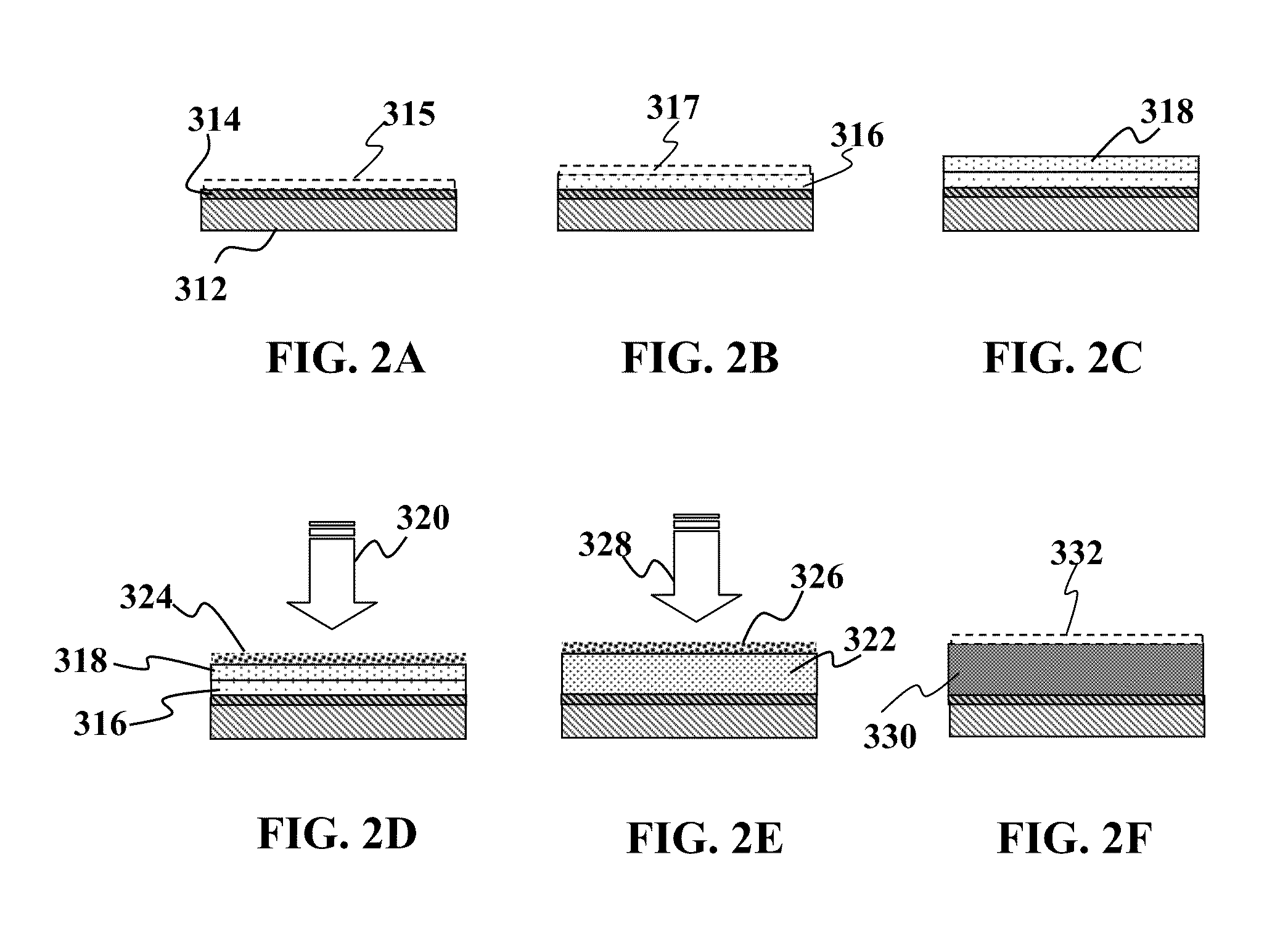Low cost solar cells formed using a chalcogenization rate modifier
a solar cell and chalcogenization rate technology, applied in the field of photovoltaic devices, to achieve the effects of increasing gallium exposure, accelerating gallium processing, and increasing surface area exposur
- Summary
- Abstract
- Description
- Claims
- Application Information
AI Technical Summary
Benefits of technology
Problems solved by technology
Method used
Image
Examples
embodiment 1
[0050]A metal foil substrate was sputtered with Mo to form a 500 nm to 1000 nm Mo film to serve as the back contact. A barrier layer of 50 nm to 300 nm of Chromium, TiN, HfN, or other transition metal nitride barrier was formed onto the Mo back contact. A precursor ink comprised of Cu, In, Ga, and Ag, and atomic ratios Ag / (Ag+Cu)=0.1-0.3, Ga / (Ga+In)=0.35-0.5, and (Ag+Cu) / (Ga+In)=0.80-1.0. For the present embodiment, an approximately 0.5-2.5 micron thick layer of the precursor material containing solution is deposited on the substrate. The precursor material may be dispersed in a solvent such as water, alcohol or ethylene glycol with the aid of organic surfactants and / or dispersing agents described herein to form an ink.
[0051]The precursor layer is annealed with a ramp-rate of 1-5° C. / sec, preferably over 5° C. / sec, to a temperature of about 225° to about 575° C. preferably for about 30 seconds to about 600 seconds to enhance densification and / or alloying between Cu, In, and Ga in an...
embodiment 2
[0055]A metal foil substrate was sputtered with Mo to form a 500 nm to 1000 nm Mo film to serve as the back contact. A barrier layer of 50 nm to 300 nm of Chromium, TiN, HfN, or other transition metal nitride barrier was formed onto the Mo back contact. A precursor ink comprised of Cu, In, Ga, and Ag, and atomic ratios Ag / (Ag+Cu)=0.2-0.3, Ga / (Ga+In)=0.3-0.4, and (Ag+Cu) / (Ga+In)=0.8-0.9. For the present embodiment, an approximately 0.5-2.5 micron thick layer of the precursor material containing solution is deposited on the substrate. The precursor material may be dispersed in a solvent such as water, alcohol or ethylene glycol with the aid of organic surfactants and / or dispersing agents described herein to form an ink.
[0056]The precursor layer is annealed with a ramp-rate of 1-5° C. / sec, preferably over 5° C. / sec, to a temperature of about 225° to about 575° C. preferably for about 30 seconds to about 600 seconds to enhance densification and / or alloying between Cu, In, and Ga in an a...
embodiment 3
[0060]A metal foil substrate was sputtered with Mo to form a 500 nm to 1000 nm Mo film to serve as the back contact. A barrier layer of 50 nm to 300 nm of Chromium, TiN, HfN, or other transition metal nitride barrier was formed onto the Mo back contact. The method may be used to form a IB-IIB-IVA-VIA absorber material. A precursor ink is provided wherein Ag / IB=0.1-0.4. A method of forming (Ag,Cu)xZnySnz, (Ag,Cu)xZnySnzSa (ACZTS), (Ag,Cu)xZnySnzSeb (ACZTSe) or (Ag,Cu)xZnySn2SaSeb (ACZTSSe) layers with well-defined total bulk stoichiometries, wherein x ranges from 1.5 to 2.5, y ranges from 0.9 to 1.5, z ranges from 0.5 to 1.1, a ranges from 0 to 4.2, preferably from 0.1 to 4.2, and b ranges from 0 to 4.2, preferably from 0.1 to 4.2, and which method is easy to apply and suitable for large scale production of thin film solar cells.
[0061]In one embodiment, the stoichiometric ratio for a ACZTS solar cell precursor foil may be (Ag: 10 at.-%, Cu: 40 at.-%, Zn: 25 at.-%, Sn: 25 at.-%) Optio...
PUM
 Login to View More
Login to View More Abstract
Description
Claims
Application Information
 Login to View More
Login to View More - R&D
- Intellectual Property
- Life Sciences
- Materials
- Tech Scout
- Unparalleled Data Quality
- Higher Quality Content
- 60% Fewer Hallucinations
Browse by: Latest US Patents, China's latest patents, Technical Efficacy Thesaurus, Application Domain, Technology Topic, Popular Technical Reports.
© 2025 PatSnap. All rights reserved.Legal|Privacy policy|Modern Slavery Act Transparency Statement|Sitemap|About US| Contact US: help@patsnap.com



